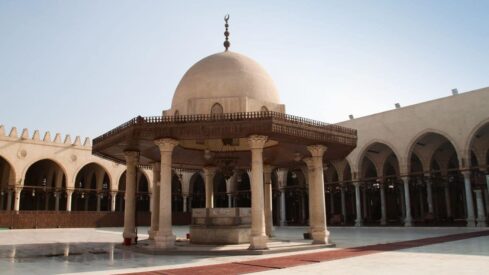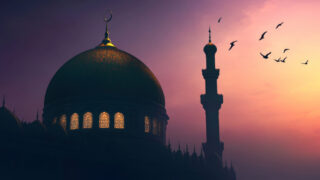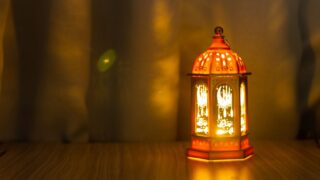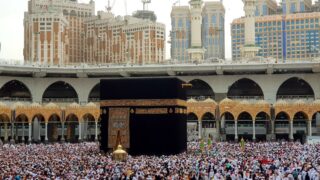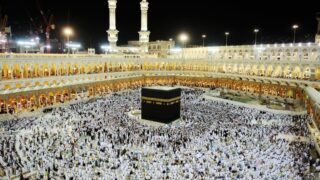The mosque has continuously played an active role in the guidance of the Muslim community, teaching both the young and older generations as well as producing a venue for Muslims to meet one another on religious occasions. But the mosque has much more potential than this, and we need to utilize it fully so that many more areas of the lives of Muslims may benefit from it.
The mosque is the most important institution in Islam. After the home and the workplace, it is the most frequented place. Muslims visit it at least twice, if not three or five times, a day. There, they rekindle their spirituality, strengthen their relationship with their Creator, meet their Muslim brethren, and renew their sense of belonging.
Places of worship have been known since the time the history of humankind was first recorded. This is a confirmation of the fact that humans have been created religiously inclined. They had to satisfy their religious craving to establish a relationship with their Creator. They built the temple, the shrine, the synagogue, the church, and the mosque for that purpose. These places fulfilled, in one way or another, this basic task in accordance with the vision of the role of religion in life.
Islamic Concept
Islam is the final religion of Almighty Allah. Its Book (the Qur’an) is the final revelation. Its Messenger (Prophet Muhammad, peace and blessings be upon him) is the seal of all prophets and messengers. As such, it deals with the affairs of this life in a comprehensive way. It is a religion, a spiritual force, and a comprehensive way of life. It aims to produce the type of community that is described in its Book as the best community to be brought forward to all people.
To evolve and bring about such pioneering personality, there should be an instrument capable of achieving this goal. It is not an educational institution, for education is conceived, to a great extent, as a means of handing over a skill or a profession. It is not also a place of meditation, for a place of meditation merely caters for the spiritual dimension. It is the mosque, for the mosque emerged with the appearance of the Muslim community.
The Makkan Period
Looking at the early stage of the Islamic Message, in particular the Makkan Era, we see a group of converts living in a sea of polytheists. They exercised their basic religious acts as individuals. The authority, the way of life, and the social norms were all dominated by non-Muslims.
Muslims were living as strangers in such an environment. The change here was directed toward believing in a Supreme, Transcendent, and Everlasting One Creator. This awareness on the part of Muslims was the most important aspect of the new mission during that stage. This may account for the absence, then the far-reaching social change that was to take place later on as a result of the change in the environment; that was the Madinah Era.
Appearance of the Mosque
The migration of Prophet Muhammad (peace and blessings be upon him) from Makkah to Madinah signalled a great change in the character of the Muslim community. For the first time, the Prophet felt free from the dominant authority of the polytheists at Makkah. On arrival at the outskirts of the new city, at Qubaa’, the Prophet spent a few days resting and preparing for the entrance to the city. Having lost no time, he built the first mosque there, the Mosque of Qubaa’.
The Prophet (peace and blessings be upon him) stayed in Qubaa’ from Monday to Friday morning when he started marching to Madinah. On the way, Friday prayer became due at the valley of Ranuna’, the settlement of Banu Salim. There he offered the first Friday Congregational Prayer. That mosque that was built there was the second mosque in Islam.
Many people came to the Prophet offering their protection and hospitality. Prophet Muhammad (peace and blessings be upon him) gratefully acknowledged their good feelings requesting them to release the leash of his she-camel, for it was directed by Allah to the place where the Prophet was to stay. Finally, the she-camel came to a halt. The Prophet descended and, later on, his Mosque (known in Arabic as: Al-Masjid An-Nabawi) was built at that place.
Thus, two mosques were built within a short period of time. This is a crystal-clear indication to the far-reaching role the mosque has to play in moulding the shape of the community that is chosen by Almighty Allah to lead humanity in the spiritual, moral, and social change along the future history of humankind till the world comes to an end.
In his commentary on the Qur’an, Al-Qurtubi, a prominent explanator of the Qur’an wrote extensively on the two verses quoted below, bringing out a wide range of topics related to the mosque.
I shall touch on some of these topics:
The Function of the Mosque
In the Qur’an, there are a number of verses in the Qur’an that stress, most importantly, the spiritual function of the mosque. For example, Almighty Allah says:
“In Houses that Allah has allowed to be exalted and that His name will be remembered therein. Therein, do offer praise to Him, at morning and evening, men whom neither merchandise nor sale beguiles them from the remembrance of Allah and constancy in prayer and paying to the poor their due, men who fear the day on which hearts and eyeballs will be overturned.” (An-Nur 24:36-37)
The word translated here as “exalted” is literally “to be raised high.” The two meanings are acceptable here, however. The literal meaning is to indicate that mosques are to be built in a respectably impressive but non-expensive way. They are the houses of Allah. All due consideration is to be taken when building a mosque. At the same time, the mosques are to be exalted, due respect to be given to them, and there should be no bickering, shouting, or fighting inside them.
The mosques are the places for the regeneration of our spiritual power through prayers, the remembrance of Allah, recital of the Qur’an, and supplications. [According to the Prophet (peace and blessings be upon him)], Mosques are the places the angels frequent most, where peace and tranquillity descend upon those who are sitting there reciting and studying the Qur’an.
Mosques are also the most suitable places for offering the prayer. They are aloof from the hustle and bustle of the streets, workplaces, or markets. At the mosque, a sense of sanctity and reverence replaces the worry and trouble of daily life. If the mind is troubled outside the mosque, it is at peace inside, for it is in communication with the ultimate source of comfort and spiritual joy.
In the Sunnah, there are different types (of Sunnah). Here, the practical Sunnah is the one under discussion. In the Makkan period, the Messenger of Allah (peace and blessing be upon him) used to meet the Companions either individually or in small groups. The most famous place of meeting was the house of Al-Arqam. At that place, Islamic instructions were given in a secret way and the whole religion of Islam was practiced secretly.
At Madinah, the Prophet was free to meet with his Companions at any time and in any place. The most suitable venue was the mosque. Since its establishment, the mosque assumed responsibilities that were not previously known to any place of worship. The life of the newly emerging community was gradually taking shape in and through the mosque.
The Prophet’s Mosque Roles
The following exhibits, besides being a place for performing the prayers, the significant roles played by the Prophet’s Mosque:
The mosque as a centre for education: Islam is the religion of learning. Its miracle is a rational miracle; i.e., the Qur’an. The first revealed verses were about learning: reading and writing. There was no school or college to enrol in. The place where those seeking guidance could easily find what they sought was the mosque of the Prophet (peace and blessings be upon him). His house was next to the mosque. His whole life was dedicated to his mission. So, he spent a great deal of his time meeting, teaching, and imparting knowledge in the mosque. He encouraged the Muslims to frequent the mosque. It was their school.
There are many references in which the importance of the mosque as a place of learning is emphasized. Al-Bukhari and Muslim related a story of three people entered the mosque; the Companions were sitting in a circle around the Prophet. One of the three found a place and sat in;, the second sat at the back, while the third went away. The Prophet (peace and blessings be upon him) said, “The first person came forward, so Allah came forward to him. The second was shy, so Allah did not wish to embarrass him. The third turned away, so Allah turned away from him.” No moral, spiritual incentive to learn could be more touching than such a parable.
It is reported that Abu Hurairah (may Allah be pleased with him) one day was in the marketplace. He shouted, “You are busy trading here and leaving your share of the Prophet’s inheritance that is being divided in the mosque. Some of the people there left to the mosque, anticipating some financial rewards. They did not find such a thing. What they found were the circles of learning. They came back, not very pleased with what Abu Hurairah did to them. They said, “We did not find any wealth there to be divided. He said, “What did you find there?” They replied, “The circles of learning.” He said, “This is the inheritance of Prophet Muhammad (peace and blessings be upon him).”
The mosque as a place for receiving dignitaries and delegates: In the wake of the success of the spread of Islam, many delegates and dignitaries came to inquire or negotiate a pact or to conclude agreements. The reception place was the Mosque of the Prophet. Most important of these delegates, and more indicative of the tolerant attitude of Islam, was the delegate of the Christians from Najran tribe, in the southern-west part of the Hijaz, on the border near modern-day Yemen. When the time of their prayer came, they performed their prayer in the mosque itself. Imam Abu Hanifah and Imam Ash-Shafi`i took this incident as a proof that the people of the Book may be allowed to enter the mosque.
The mosque as a charity distribution centre: The money (such as spoils of war) coming to the Prophet (peace and blessings be upon him) was distributed in the mosque. At the same time, when there was an emergency, the Prophet would deliver a sermon and call upon the community to spend in the way of Allah. Then he would give to those in need. Worthy of mention here is that the Muslim treasury in different regions used to be next to the wall of the qiblah (Arabic for: direction of the Ka`bah – the place to which Muslims face in their prayers). The reason, as given by `Umar ibn Al-Khattab, was that there was always someone offering their prayer at any given time. Consequently, no one could possibly think of breaking into the treasury.
The mosque as a shelter for the homeless: Many Muslims who migrated with the Prophet (peace and blessings be upon him) were single, homeless, and destitute. They were lodged in the mosque. They were known as the people of Suffah. Abu Hurairah was one of them. Also, when `Abdullah ibn Umar was young and single, the mosque was his bedroom. Moreover, the great mosques in the Muslim cities served as hostels for Muslim travellers.
The mosque as a nursing home: Rufaydah, one of the pious Companions of Prophet Muhammad, used to nurse sick people in the Prophet’s Mosque. In her tent in the Mosque, she nursed Sa`d ibn Mu`adh, until he passed away.
The mosque as a place of entertainment on special occasions: The Messenger of Allah (peace and blessings be upon him) encouraged that marriage be contracted and celebrated in the mosque. Furthermore, he allowed the Abyssinians to perform a folklore dance and `A’ishah was leaning on his shoulder and watching their performance.
These were among the most important roles the mosque played in moulding the shape of the Muslim nation. Those roles continued in one way or another all through the Islamic history. Great mosques are still famous for their academic history: the Sacred Mosque in Makkah, the Prophet’s Mosque in Madinah, Al-Aqsa Mosque, Al-Azhar Mosque, Az-Zaytouna Mosque, and Al-Qarawiyyin Mosque – the latter being the centre of learning where great non-Muslim alumnus like Pope Sylvester II, [who is credited with introducing the use of Arabic numerals and the concept of zero to Europe], studied.
*By Sheikh Sayed Ad-Darsh


